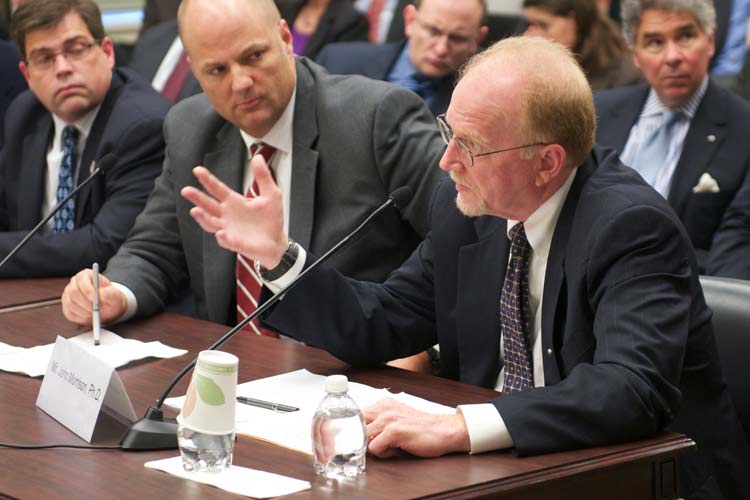
SfN Creates Toolkit to Address Gender Gap in Science
While women earn 52 percent of PhDs in neuroscience, they make up only 29 percent of tenured faculty and 23 percent of full professorships, according to a 2011 SfN survey of neuroscience programs. As part of its mission, the Society for Neuroscience seeks to promote the advancement of women in neuroscience, and to further this goal, SfN recently created a toolkit to increase awareness about issues facing women in academia and effective strategies to improve hiring practices. “Increasing Women in Neuroscience: Candidate Recruitment and Evaluation” is a downloadable, 30-minute PowerPoint presentation for use by SfN members, chapters, and neuroscience departments that outlines effective strategies to increase diversity among faculty.
“In developing this toolkit, SfN’s goal is to foster dialogues across the neuroscience community, at the local level, about this important issue that affects not only female scientists but the entire field,” said Kenneth Maynard, chair of SfN’s Professional Development Committee, which spearheaded the project. “In the past decade, women have achieved the highest leadership roles across various industries, but the advancement of women in academia continues to be a challenge. SfN recognizes that science is best served when a diversity of voices can contribute and share their expertise. The toolkit is not only to increase awareness but to go further and provide solutions to help overcome barriers to gender equality.”
The toolkit incorporates data, real-life success stories, and ready-to-implement tools that provide an overview of the gender retention issues present within neuroscience. The presentation includes a populated notes section with the relevant background information to explain each slide, allowing SfN members to simply download the file, review the notes, and present to an audience with little advanced preparation.
“Women in academia face obstacles that sometimes go unnoticed,” said Tanea Reed, a member of SfN’s Global Membership Committee who served on the working group that created the toolkit. “This shareable module — including videos of real-life stories, potential scenarios, and case studies — is designed to help researchers, regardless of where they’re located, draw attention to these pressing issues.”
The presentation addresses questions such as:
- What is causing the leaky pipeline, and what can be done to improve the situation?
- What recruiting strategies can be implemented to increase diversity?
- What steps can be taken to avoid implicit bias when reviewing applications and interviewing candidates?
This toolkit is one of several that the SfN Professional Development Committee is planning to create based on live workshops and online modules sponsored by SfN’s Department Chair Training to Increase Women in Neuroscience (IWiN) program.
“We hope the toolkit will spark conversations among neuroscientists about the diversity of women’s experiences across the global field and will be a resource for neuroscientists to become aware of the real dimension of the gender inequality problem and the possible strategies to fight against it,” said Mara Dierssen, head of SfN’s Women in Neuroscience Subcommittee.
IWiN launched in 2010 with funding from the National Science Foundation’s ADVANCE program and sought to address the relationship between implicit bias and the recruitment and evaluation of women in academia. IWiN workshops held at the University of Arizona, University of Michigan, University of California-Irvine, and Mount Sinai provided 141 neuroscience-related department chairs from across these regions with a snapshot of the scope of the gender inequality problem: Unless graduate programs commit to a policy of gender equality, it could take up to 40 years before women make up just 50 percent of tenure-track faculty, according to the 2011 SfN survey of neuroscience programs.
Although the lack of diversity is a well-known problem in STEM fields, considering that more than half of PhDs in neuroscience are earned by women, with similar numbers in other STEM disciplines, many do not understand how the problem exists. “In the 1970s, many scientists thought the issue we face today would go away as soon as there were as many women being trained as men,” said Dr. Anne Etgen, IWiN co-principal investigator. “We believed there would be a meritocracy, and that the gender difference would eventually disappear.”
But that didn’t happen.
Implicit bias is the biggest factor that impedes the fair recruitment and advancement of women in neuroscience. “In this country and others, there is an implicit or explicit message that these are jobs for men and not for women,” Etgen said.
Acknowledging implicit bias is a foundational step in restructuring recruitment and evaluation practices to attract excellent, diverse candidates, but people can find it difficult to accept the idea that they are affected by subtle and overt societal messaging. “Many people may not hold a conscious belief of their bias,” Etgen said. “If you don’t believe you have implicit bias, you won’t think your peers have it, too.”
When implicit bias isn’t recognized or addressed, it negatively affects the hiring and evaluation process. To improve this process, the IWiN workshops and the new SfN toolkit recommend training for faculty about implicit bias, diversifying the ranking criteria for candidates, and conducting exit interviews to identify and evaluate any problem areas.
“IWiN resulted in dramatic changes in our recruitment strategies,” said Dr. James Geddes, the associate dean of research at the University of Kentucky College of Medicine who attended an IWiN workshop in 2013. “For our recent recruitments, we partnered with other departments to construct a broad position announcement and cast a wide net, ensured that the search committee was diverse, and utilized a candidate evaluation form with specific criteria. Recently, an institution-wide policy was implemented requiring all faculty search committee members to receive training in hidden/implicit bias.”
SfN members can download the “Increasing Women in Neuroscience: Candidate Recruitment and Evaluation” presentation as a tool to help them better implement new recruitment strategies in their own departments.
“Many people worry that increasing women or diversity among the faculty comes at the cost of decreased quality,” said Jill B. Becker, IWiN co-principal investigator. “Departments that use these tools find out that is not the case. This presentation gives departments and search committees all of the information they need to successfully recruit, evaluate, and hire in a way that will increase the quality of their faculty as well as the diversity in their department.”






















